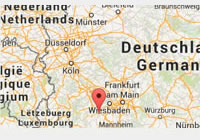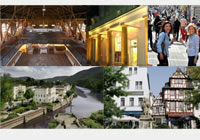History of the town
Bad Kreuznach can look back on a long and eventful history.
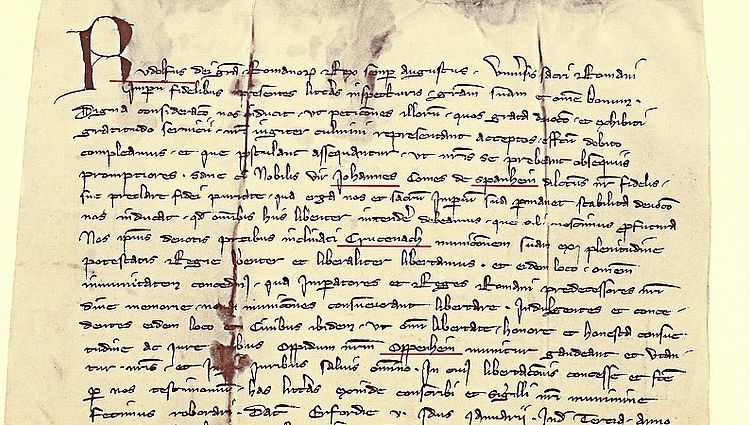
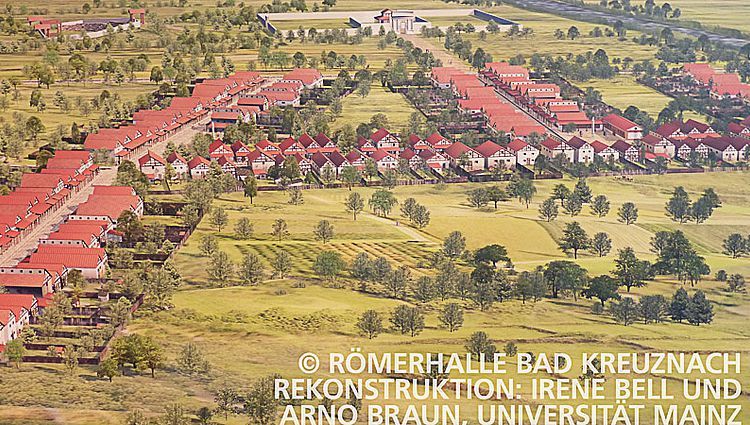
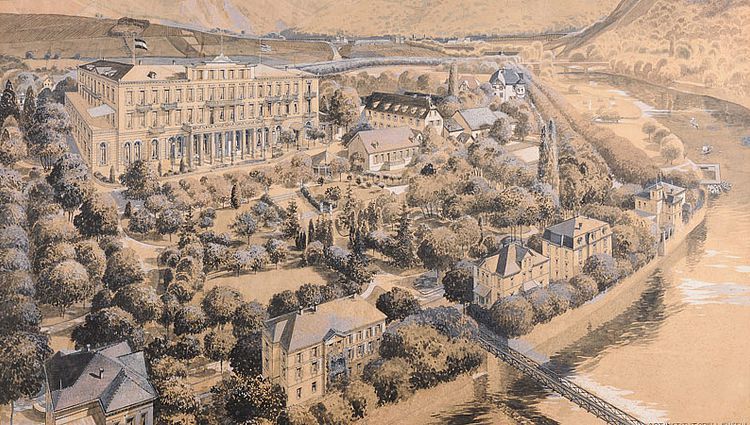
Evidence shows that people settled here as far back as the Stone Age, followed later by Celts and Romans. After all, Bad Kreuznach was once part of France and Prussia. The village of Ebernburg belonged to Bavaria, and the Rheinhessen neighbourhoods of Planig, Bosenheim and Ippesheim to Hessen. The Bad Kreuznach area was once, and is still today, a historical link between the Pfalz, Hunsrück, Rheinhessen and Rhineland regions.
History of the spa & contemporary witnesses
Salt has been extracted from the water of the medicinal springs in Bad Kreuznach and Bad Münster am Stein since 1730. For 200 years, water from the medicinal springs has been used as a remedy. Learn more interesting facts about the origins and development of the two spa resorts Bad Kreuznach and Bad Münster am Stein here.
A short history of Bad Kreuznach
Cruciniacum is the name the Romans probably gave the Celtic settlement which was founded on the banks of the Nahe river in the 5th century BC. Evidence of Roman life, which began at the start of the Christian era and lasted about four centuries, can be admired today in the Römerhalle museum along with the remains of the Roman villa (Römervilla). The first three centuries following the new era probably saw the introduction of wine growing, which still dominates the landscape surrounding Bad Kreuznach today. But let’s take one thing at a time: come with us on a revealing tour of our town's eventful history ...
Early History and the Middle Ages
- In 200 BC, Celts settle here. The remains of Celtic fortifications can be found on the forested hills rising up on both sides of the Nahe river.
- From the birth of Christ until the 4th century, “Cruciniacum” belongs to the Roman Empire. Situated behind the Rhine border, it serves to supply the troops in Mainz.
- In 234, the Oceanus mosaic – one of the most striking mosaic floors – was laid in a luxurious villa in the present-day Schloßpark gardens.
- 4th century: in the course of the Germanic invasions, the Romans build a fort in the area known now as Heidenmauer. Today, the Römerkastell school complex is located there.
- Between the 6th and 8th centuries, in Frankish times, the Roman fort (Römerkastell) is converted into a royal palace. Louis I, byname Louis the Pious, resides here occasionally.
- Between the 9th and 12th centuries, the town centre shifts to where it is today, and the terms Altstadt (Old Town - east of the Nahe river) and Neustadt (New Town - west of the river) are coined.
- From the 13th - 15th century, the town is under the rule of the counts of Sponheim.
- 1206: construction of Kauzenburg castle (Kauz means “owl”) in the New Town.
- Around 1250, a chapel is built and later also the Nikolauskirche (Church of St Nicholas) as part of a Carmelite monastery.
- 1300: the stone-piered bridges over the two arms of the Nahe river are built.
- 1311-1332: construction of the Pauluskirche church on the island by the Nahebrücke bridge.
Modern Period – 1500 - 1900
- In the 15th century, the House of Sponheim dies out. From now on the town is under the shared rule of the counts palatine, the margraves of Baden and the counts of Veldenz.
- 1618-1648: in the Thirty Years’ War, the town is conquered and occupied by the Spanish and Swedes. The population shrinks to a third.
- In 1689, French soldiers of Louis XIV destroy the New Town, Kauzenburg castle and the Pauluskirche church.
- In the 18th century, the town is under the sole rule of the counts palatine of Simmern.
- From 1723, construction of the saltworks and the start of salt production in Bad Münster am Stein and in Salinental valley which belongs to the town of Bad Kreuznach in 1898.
- From 1798 to 1814, Kreuznach belongs to France.
- From 1815 to 1945, the town belongs to the Kingdom of Prussia.
- From 1817 on, thanks to the spa treatments with salt springs, the town rises to become an international health resort.
- 1846: construction of the first Kurhaus (spa hotel) and growth of the spa quarter with numerous spa hotels.
- 1859: construction of the Rhine-Nahe railway.
- In the 19th century, Kreuznach develops simultaneously into a spa town and a commercial centre. On account of the saltworks, the fishing village of Bad Münster likewise becomes an international spa resort from 1850 on.
1900 to the present
- The year 1904 sees the discovery of radon in the brine springs and in 1912 the opening of the radon healing tunnel.
- In 1917/18, the headquarters of the chiefs of staff are located in the spa quarter.
- From 1920 to 1930 and again from 1945 to 1950, Kreuznach is under French occupation.
- 1948: Bad Kreuznach becomes part of the new federal state of Rhineland-Palatinate.
- Between 1950 and 2000, up to 8,000 US soldiers and their families are stationed in Bad Kreuznach.
- 1955: spa operations are resumed.
- 1965: Michelin factory locates to Bad Kreuznach.
- In 1969, Bad Kreuznach incorporates the neighbourhoods of Winzenheim, Planig, Bosenheim and Ippesheim, creating new room for growth.
- From 1970, the eastern part of Bad Kreuznach is developed as an industrial estate. Moreover, a lot of old buildings have to make way for the redevelopment of the New Town, known today as the historical quarter.
- 1979: the thermal baths and the Karl Aschoff Clinic are built.
- 2000 to the present: after withdrawal of the American troops, properties formerly in the military’s hands are converted.
- 2000: the BÄDERHAUS sauna complex opens.
- 2002: the opening of the new outpatient health centre and the visitors’ centre Haus des Gastes with a cabaret theatre.
- 2014: the towns of Bad Kreuznach and Bad Münster am Stein-Ebernburg merge.



